Anodized aluminum coils refer to aluminum coils that have been anodized. Anodizing is an electrochemical process that strengthens the protective oxide layer on aluminum surfaces.
Ordinary unoxidized aluminum will produce a layer of ordinary oxide film after being exposed to the air for a period of time, but this layer of oxide film does not have any protective effect, and its performance will change with time.
Table of Contents
- Is Anodized Aluminum Still Conductive?
- Anodized Aluminum Coil vs Aluminum Coil
- Color Coated Anodized Aluminum Coil
- Anodized Aluminum Alloy Coil
- Anodized Aluminum Coil Performance Advantage
- Anodized Aluminum Coil Applications
- The Uneven Oxide Film may be caused by 3 Reasons
- Several Main Factors Affecting the Quality of Anodized Film
But after special oxidation, a hard wear-resistant layer will be produced. Its surface hardness can reach the sapphire level, and the Moore hardness can reach 9.
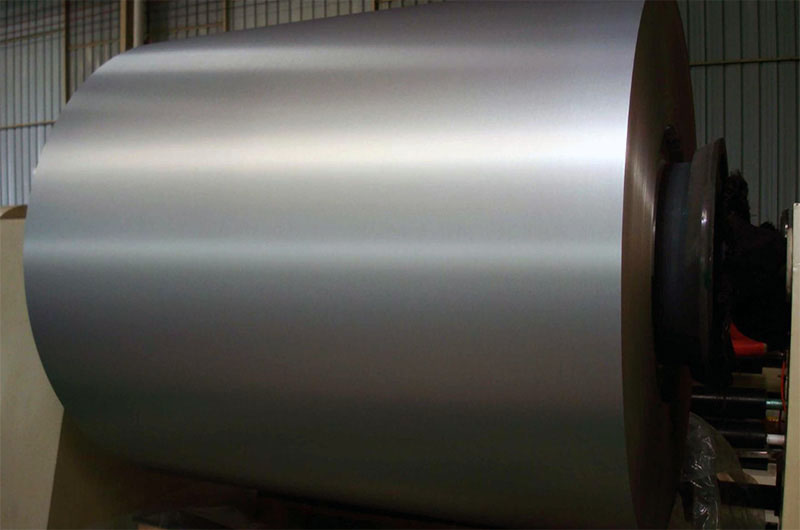
Anodized aluminum is stronger and more durable than polished aluminum, and anodizing involves placing a coil of aluminum in a chemical acid bath. Passing an electric current through the acid causes the surface to oxidize, which forms a strong coating on the aluminum surface.
Anodized aluminum is commonly found in applications where the material may be exposed to the elements. It's also found in kitchen equipment like pots and pans because the material distributes heat evenly.
Is Anodized Aluminum Still Conductive?
The breakdown voltage of an Anodized Aluminum Coil is as high as 2000V, which enhances the corrosion resistance.
Aluminum is a kind of conductive material, and its surface is easy to generate electric charges, which will absorb dust and dust in the air, making its originally bright surface slightly dark.
Alumina solves this problem. It turns the originally charged aluminum into an insulator, and the surface is not easy to be contaminated with dust so the surface of the alumina plate is easier to take care of.

Anodized Aluminum involves immersing an aluminum coil in an electrolytic solution and passing an electric current through it. The process creates a thicker, more durable oxide layer, which has several advantages.
- Higher Corrosion Resistance: Anodized coatings on aluminum coils offer higher corrosion resistance, making them suitable for applications where the coils are exposed to harsh environments or moisture.
- High durability and hardness: It also improves the durability and hardness of the coil, making it more resistant to scratches and wear.
- Aesthetics: Anodized surfaces are generally more aesthetically pleasing, with a consistent and attractive appearance.
The advantage of anodized aluminum coils is that they will not change color after long-term use. Many aluminum products will turn black and discolored after being used outdoors for a long time in humid air. This is because aluminum will be oxidized by the outside air in a natural environment, and an oxide film with uneven thickness is formed on the surface. Because the thickness of the oxide film is uneven, there will be a color difference. Although it will not continue to oxidize to the inside, the appearance is not very good.
Alumina coils are artificially formed in advance to form oxide films of various thicknesses on the surface of aluminum coils, which will not change color after long-term use.
Good weather resistance, long-term indoor use does not change color, does not corrode, does not oxidize, and does not rust. Strong metallic feeling, high surface hardness, good scratch resistance, no paint coverage on the surface, retaining the metallic color of the aluminum coil.
High fire resistance, no toxic gas, in line with fire protection and environmental protection requirements. Strong stain resistance, easy to clean, no corrosion spots.

Anodized Aluminum Coil vs Aluminum Coil
Compared with ordinary aluminum coils, alumina coils make the product more high-grade and more textured.
Performance
- Ordinary aluminum coils are easy to scratch and get dirty.
- With its unique oxide film, the aluminum oxide coil is scratch-resistant and has excellent washing resistance. It is UV-resistant and does not fade, does not leave fingerprints after touching, is anti-static, does not absorb dust, and is easy to clean.
Appearance
- The surface of the aluminum oxide coil is more delicate and the gloss is soft. The special oxidation treatment can make the surface of the aluminum coil form an oxide film containing certain elements so that the surface of the aluminum coil shows different colors and enhances the visual effect.
- The use of alumina rolls does not require modification and can be directly stamped to improve the overall aesthetics of the product.
Color Coated Anodized Aluminum Coil
The anodizing process can produce a range of colors on aluminum coils, depending on the type of dye used in the process. This makes anodized aluminum coils popular in architectural applications where color choice and visual appeal are important.
- Black Anodized Aluminum Coil
- Brown Anodized Aluminum Coil
- Orange Anodized Aluminum Coil
- Gray Anodized Aluminum Coil
- White Anodized Aluminum Coil
- Anodized Aluminum Red Coil
- Pink Anodized Coil
- Green Anodized Aluminum Coil
- Blue Anodized Coil
- Gold Anodized Aluminum Coil
- Copper Anodized Aluminum Coil
- Silver Anodized Aluminum Coil
- Anodized Aluminum Bronze Coil
- Champagne Anodized Aluminum Coil
- Yellow Anodized Aluminum Coil
- Dark Bronze Anodized Finish Coil
- Dark Gray Anodized Aluminum Coil
- Custom Color Anodized Coil
Anodized Aluminum Alloy Coil
Haomei Aluminum can provide customers with 1050, 1060, 3003, 3005, 5005, 5052 and other Anodized Aluminum Coil.
Anodized Aluminum Coil is mainly 5 series, of which 5005 Anodized Aluminum Coil, 5052 Anodized Aluminum Coil, 5083 Anodized Aluminum Coil, 5086 Anodized Aluminum Coil, 5182 Anodized Aluminum Coil and 5251 Anodized Aluminum Coil are more common.
-
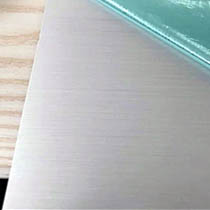 5052 Anodized Aluminum Coil
5052 Anodized Aluminum Coil5052 aluminum alloy can be dyed into various colors after oxidation. In addition, 5052 alumina has good formability, corrosion resistance, weldability, and medium strength, and is an ideal choice for electronic product casing materials such as notebook computers and TVs. In addition, the 5052 Anodized Aluminum Coil is also widely used in other fields.
-
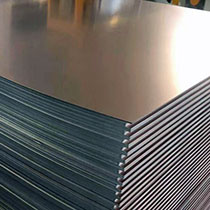 5005 Anodized Aluminum Coil
5005 Anodized Aluminum Coil- 5005 Anodized Aluminum Sheet Coil has medium strength, good corrosion resistance, and processability, and its strength is comparable to that of 3003. The anodic oxide film is brighter than the oxide film on the 3003 alloy and is consistent with the tone of the 6063 alloy.
- 5005 Anodized Aluminum Sheet Coil is often used as conductors, cooking utensils, instrument panels, shells and architectural decorations, interior and exterior materials for building materials, interior materials for vehicles, etc.
-
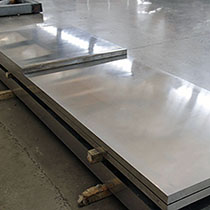 3003 Anodized Aluminum Coil
3003 Anodized Aluminum Coil- It is more appropriate to use 3003 aluminum to make the shell of the host.
- 3mm 3003 Anodized Aluminum Coil Sheet undergoes anodizing process, with silky brushed surface treatment. It is as smooth as hair, and the original taste shows the luxurious and luxurious metal texture.
- 3003 Anodized Aluminum Coil Sheet has good heat dissipation performance and is not easy to bend, etc., which gives strong support to computer motherboard components.
-
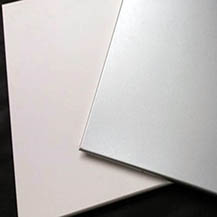 3004 Anodized Aluminum Coil
3004 Anodized Aluminum Coil- The reason why 3004 Anodized Aluminum Coil is so widely used is that it has been unanimously recognized by the market for its advantages such as stable performance, high strength, oxidation resistance, good coloring, stamping resistance, high elongation strength, and not easy to crack.
- Because its price is lower than that of the 5 series products, the market acceptance is higher.
- 3004 Anodized Aluminum Coil can be used as thermal insulation decoration for large shopping malls, amusement places, high-end villas, and roofs in some special environments.
Anodized Aluminum Coil Performance Advantage
High hardness, good corrosion resistance
- In the anodic oxidation experiment, aluminum is placed in the corresponding electrolyte (such as sulfuric acid, chromic acid, oxalic acid, etc.) as an anode, and electrolysis is carried out under specific conditions and an applied current.
- The anodized aluminum is oxidized, and a thin layer of aluminum oxide is formed on the surface, the thickness of which is 5-20 μm, and the hard anodized film can reach 60-200 μm. The product has the characteristics of high hardness, good insulation, strong corrosion resistance, and strong adsorption capacity.
Anti-pollution and fire prevention, high safety
No fingerprints or stains are left on the surface of the product, easy to clean, and have no corrosion spots. There is no paint or any chemical substances on the surface, it does not burn at a high temperature of 600 degrees and does not produce toxic gases, which meets the national fire protection and environmental protection requirements.
Good weather resistance, suitable for processing
- Anodized aluminum with standard thickness oxide film (3μm) will not change color, corrosion, oxidation, and rust for a long time indoors. Anodized aluminum with a thicker oxide film (10μm) can be used outdoors and can be exposed to sunlight for a long time without discoloration.
- The product can be stamped continuously at high speed, which is convenient for direct processing into products without complicated surface treatment, which greatly shortens the production cycle and reduces the production cost of the product.
Anodized aluminum with a strong metallic feel
- The surface of anodized aluminum has high hardness, good scratch resistance, and no paint coverage on the surface, aluminum oxidation retains the color of aluminum metal, highlights the modern metal feeling, and improves product grade and added value.
- Anodized aluminum plate is highly stain-resistant
- No fingerprints are left when used, there will be obvious stains and traces, easy to clean, has no corrosion spots, easy to maintain and maintain.
Excellent Performance
Anodized aluminum sheet not only has excellent bendability but also has excellent machinability. It can be processed in different sizes according to the needs of users to avoid waste. Its weather resistance is also very good, no matter what kind of weather conditions it can be used normally, it can also stand upright in the face of saline acid rain.
Anodized Aluminum Coil Applications
Anodized aluminum coils are used in a wide variety of industries, including building, construction, automotive, electronics, and more. It can be used in exterior cladding, roofing, signage, trim, electrical enclosures, and other applications requiring a durable, corrosion resistant, and visually appealing aluminum surface.
Anodized aluminum coils are usually available in different widths, thicknesses, and colors to suit specific project requirements.
Including handicrafts, household appliances, interior decoration, and lamps and lanterns are often used in lighting. For example:
- Interior decorations: such as photo frames, lighting, ceilings, walls, furniture, cabinets, etc.
- Household appliances: refrigerators, microwave ovens, audio equipment, etc.
-
Exterior Decoration
- Outdoor Curtain Wall
- Building exterior walls, beams and columns, balconies, canopies
- airport, station, hospital
- conference hall, opera house
- gym
- High-rise buildings such as reception halls
-
Other
- Signs, nameplates, bags
- Chemical/Insulation Piping Package
- Car interior and exterior decoration
- crafts
- elevator
- mold making
The Uneven Oxide Film may be caused by 3 Reasons
1. Problem: The working area of the swing in the slot is too large, and the color of the oxide film is inconsistent.
Preventive measures: Oxidized workpieces have small fluctuations in rotation and can be disposed of quietly, but when the temperature of the solution is too low, map-like mottling will easily appear, which is unnatural.
2. Problem: When the damaged part of the alloy aluminum coil processing coating is cut off, the outer layer is covered with high-quality aluminum alloy, and the inner layer is miscellaneous aluminum. Due to the large difference, white spots will appear after oxidation.
Preventive measures: strictly control materials, and reduce or remove miscellaneous aluminum.
3. Problem: The process operation is incomplete in the alkaline etching of the workpiece, and the original part of the oxide film and the dirt cannot be completely removed; it is disposed of immediately after the alkaline etching, and the surface is still alkaline; the workpiece is in contact with foreign matter during the transfer process.
Preventive measures: Only by strictly ensuring the integrity of the alloy aluminum coil process during the production process can better products be produced.
Several Main Factors Affecting the Quality of Anodized Film
Current Density: within a certain limit, the current density increases, the film growth rate increases, the oxidation time shortens, the pores of the formed film are more, it is easy to color, and the hardness and wear resistance increase.
- If the current density is too high, due to the influence of Joule heat, the surface of the parts will be overheated and the temperature of the local solution will increase, the dissolution rate of the film will increase, and the parts may be burned.
- If the current density is too low, the growth rate of the film will be slow, but the formed film will be denser, and the hardness and wear resistance will be reduced.
Aluminum oxidation, when used for protection, decoration, and pure decoration processing, uses the upper limit of the allowable concentration, that is, 20% sulfuric acid as the electrolyte.
Oxidation time: The choice of oxidation time depends on the electrolyte concentration, temperature, anode current density, and required film thickness. Under the same conditions, when the current density is constant, the growth rate of the film is proportional to the oxidation time.
But when the film grows to a certain thickness, due to the increase of the film resistance, which affects the conductivity, and due to the temperature rise, the dissolution rate of the film increases, so the growth rate of the film will gradually decrease, and finally, no longer increase.
Concentration of sulfuric acid: usually 15% - 20%.
As the concentration increases, the dissolution rate of the film increases, and the growth rate of the film decreases, the film has high porosity, strong adsorption, high elasticity, and good dyeability (easy to dye dark colors), but the hardness and wear resistance are slightly worse.
When the concentration of sulfuric acid is reduced, the growth rate of the oxide film is accelerated, and the film has fewer pores, high hardness, and good wear resistance.
Electrolyte temperature: The electrolyte temperature has a great influence on the quality of the oxide film. The temperature of the electrolyte must be strictly controlled during production. To prepare a thick and hard oxide film, the operating temperature must be lowered. During the oxidation process, compressed air is used to stir and a relatively low temperature is used, and hard oxidation is usually performed at about zero degrees.
As the temperature increases, the dissolution rate of the film increases and the film thickness decreases.
- When the temperature is 22-30°C, the resulting film is soft and has good adsorption capacity, but rather poor abrasion resistance.
- When the temperature is higher than 30°C, the film becomes loose and uneven, sometimes even discontinuous, and has low hardness, thus losing its use value.
- When the temperature is between 10-20°C, the formed oxide film is porous, has strong adsorption capacity, is elastic, and is suitable for dyeing, but the hardness of the film is low and the wear resistance is poor.
- When the temperature is lower than 10 °C, the thickness of the oxide film increases, the hardness is high, and the wear resistance is good, but the porosity is low.
Stirring and moving: It can promote the convection of the electrolyte, strengthen the cooling effect, ensure the uniformity of the solution temperature, and not cause the quality of the oxide film to decline due to the local heating of the metal.
Impurities in the electrolyte: Impurities may exist in the electrolyte used for aluminum anodization.
Aluminum alloy composition: Generally speaking, other elements in aluminum metal reduce the quality of the film, and the obtained oxide film is not as thick as that obtained on pure aluminum, and the hardness is also low. Aluminum alloys with different components should be careful not to carry out anodizing in the same tank.

